Fiat 500 vs Nissan Leaf – Which one offers the better deal?
Costs and Efficiency:
Price and efficiency are key factors when choosing a car – and this is often where the real differences emerge.
Fiat 500 has a decisively advantage in terms of price – it starts at 18800 £, while the Nissan Leaf costs 30800 £. That’s a price difference of around 11923 £.
In terms of energy consumption, the advantage goes to the Fiat 500: with 13 kWh per 100 km, it’s evident more efficient than the Nissan Leaf with 16.70 kWh. That’s a difference of about 3.70 kWh.
As for range, the Nissan Leaf performs a bit better – achieving up to 385 km, about 54 km more than the Fiat 500.
Engine and Performance:
Power, torque and acceleration say a lot about how a car feels on the road. This is where you see which model delivers more driving dynamics.
When it comes to engine power, the Nissan Leaf has a significantly edge – offering 217 HP compared to 118 HP. That’s roughly 99 HP more horsepower.
In acceleration from 0 to 100 km/h, the Nissan Leaf is clearly perceptible quicker – completing the sprint in 6.90 s, while the Fiat 500 takes 9 s. That’s about 2.10 s faster.
In terms of top speed, the Nissan Leaf performs minimal better – reaching 157 km/h, while the Fiat 500 tops out at 155 km/h. The difference is around 2 km/h.
There’s also a difference in torque: Nissan Leaf pulls clearly perceptible stronger with 340 Nm compared to 220 Nm. That’s about 120 Nm difference.
Space and Everyday Use:
Whether family car or daily driver – which one offers more room, flexibility and comfort?
Seats: Nissan Leaf offers a bit more seating capacity – 5 vs 4.
In curb weight, Fiat 500 is clearly perceptible lighter – 1141 kg compared to 1580 kg. The difference is around 439 kg.
In terms of boot space, the Nissan Leaf offers convincingly more room – 394 L compared to 185 L. That’s a difference of about 209 L.
In maximum load capacity, the Nissan Leaf performs distinct better – up to 790 L, which is about 240 L more than the Fiat 500.
When it comes to payload, Nissan Leaf noticeable takes the win – 415 kg compared to 325 kg. That’s a difference of about 90 kg.
Who wins the race?
The Nissan Leaf proves to be wins the duel decisively and therefore becomes our DriveDuel Champion!
Nissan Leaf is the better all-rounder in this comparison.
Costs and Consumption
View detailed analysis
Engine and Performance
View detailed analysis
Dimensions and Body
View detailed analysis
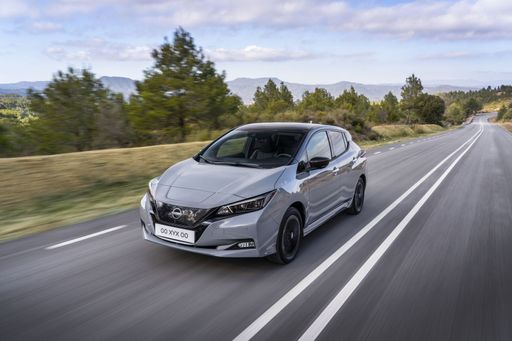 @ Nissan Motor Corporation
@ Nissan Motor Corporation
Nissan Leaf
Fiat 500
The Fiat 500 is a cheeky, retro‑styled city car that turns heads with its iconic looks and playful personality. Perfect for weaving through tight streets and easing into tiny parking spots, it’s aimed at buyers who want style and character more than grand touring prowess.
details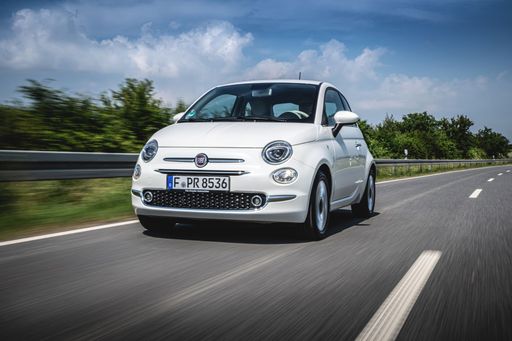 @ Fiat / Stellantis Media
@ Fiat / Stellantis Media
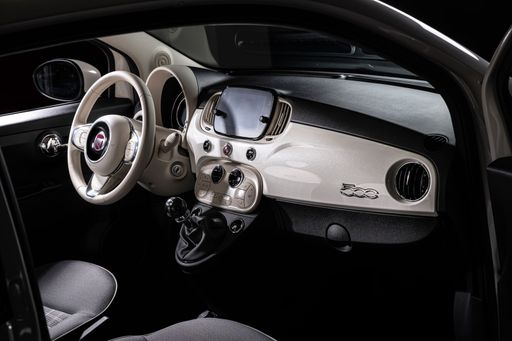 @ Fiat / Stellantis Media
@ Fiat / Stellantis Media
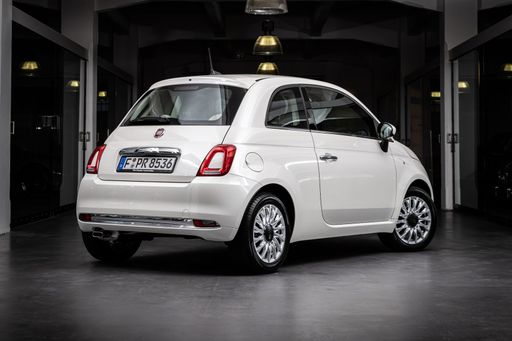 @ Fiat / Stellantis Media
@ Fiat / Stellantis Media
Nissan Leaf
The Nissan Leaf is a practical, easygoing electric hatch that turns daily commutes into a quiet, effortless affair while offering more cabin space than it lets on. It’s a sensible, wallet-friendly step into electrification for buyers who value comfort and simplicity over sporty drama, though those chasing long-distance thrills might look elsewhere.
details @ Nissan Motor Corporation
@ Nissan Motor Corporation
 @ Nissan Motor Corporation
@ Nissan Motor Corporation
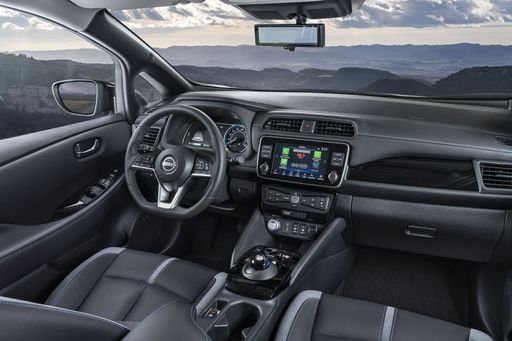 @ Nissan Motor Corporation
@ Nissan Motor Corporation
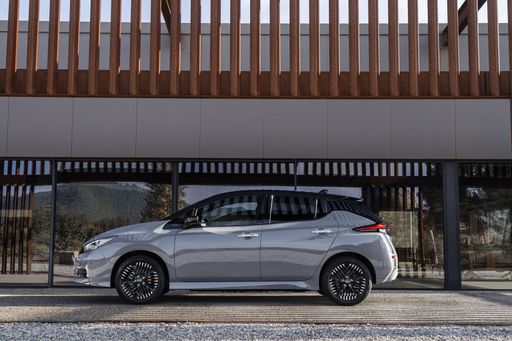 @ Nissan Motor Corporation
@ Nissan Motor Corporation
 @ Fiat / Stellantis Media
@ Fiat / Stellantis Media
|
 @ Nissan Motor Corporation
@ Nissan Motor Corporation
|
|
|
|
Costs and Consumption |
|
|---|---|
|
Price
18800 - 30800 £
|
Price
30800 - 37200 £
|
|
Consumption L/100km
5.30 L
|
Consumption L/100km
-
|
|
Consumption kWh/100km
13 - 14.7 kWh
|
Consumption kWh/100km
16.7 - 17.8 kWh
|
|
Electric Range
190 - 331 km
|
Electric Range
270 - 385 km
|
|
Battery Capacity
21.3 - 37.3 kWh
|
Battery Capacity
39 - 59 kWh
|
|
co2
0 - 120 g/km
|
co2
0 g/km
|
|
Fuel tank capacity
-
|
Fuel tank capacity
-
|
Dimensions and Body |
|
|---|---|
|
Body Type
Hatchback
|
Body Type
Hatchback
|
|
Seats
4
|
Seats
5
|
|
Doors
3 - 4
|
Doors
5
|
|
Curb weight
1141 - 1475 kg
|
Curb weight
1580 - 1756 kg
|
|
Trunk capacity
183 - 185 L
|
Trunk capacity
385 - 394 L
|
|
Length
3631 - 3632 mm
|
Length
4490 mm
|
|
Width
1683 - 1684 mm
|
Width
1788 mm
|
|
Height
1527 - 1532 mm
|
Height
1540 - 1545 mm
|
|
Max trunk capacity
440 - 550 L
|
Max trunk capacity
790 L
|
|
Payload
250 - 325 kg
|
Payload
384 - 415 kg
|
Engine and Performance |
|
|---|---|
|
Engine Type
Electric, Petrol MHEV
|
Engine Type
Electric
|
|
Transmission
Automatic, Manuel
|
Transmission
Automatic
|
|
Transmission Detail
Reduction Gearbox, Manual Gearbox
|
Transmission Detail
Reduction Gearbox
|
|
Drive Type
Front-Wheel Drive
|
Drive Type
Front-Wheel Drive
|
|
Power HP
65 - 118 HP
|
Power HP
150 - 217 HP
|
|
Acceleration 0-100km/h
9 - 16.2 s
|
Acceleration 0-100km/h
6.9 - 7.9 s
|
|
Max Speed
135 - 155 km/h
|
Max Speed
144 - 157 km/h
|
|
Torque
220 Nm
|
Torque
320 - 340 Nm
|
|
Number of Cylinders
3
|
Number of Cylinders
-
|
|
Power kW
48 - 87 kW
|
Power kW
110 - 160 kW
|
|
Engine capacity
999 cm3
|
Engine capacity
-
|
General |
|
|---|---|
|
Model Year
2023 - 2025
|
Model Year
2019
|
|
CO2 Efficiency Class
A, D
|
CO2 Efficiency Class
A
|
|
Brand
Fiat
|
Brand
Nissan
|
What drivetrain options does the Fiat 500 have?
The Fiat 500 is offered with Front-Wheel Drive.
The prices and data displayed are estimates based on German list prices and may vary by country. This information is not legally binding.
